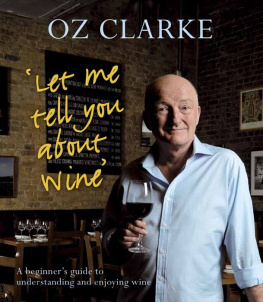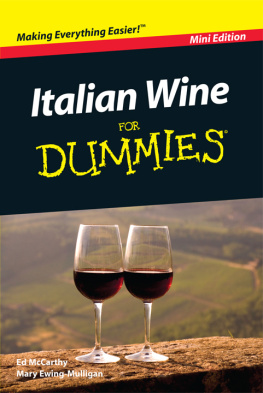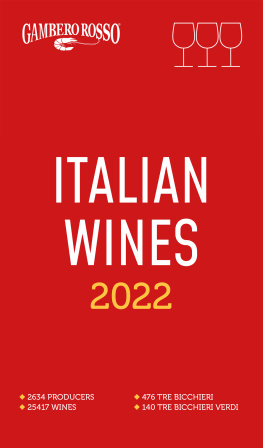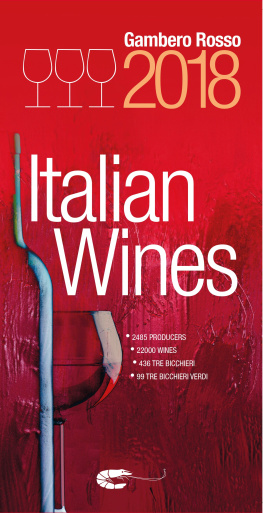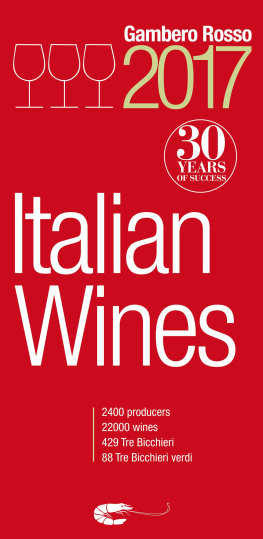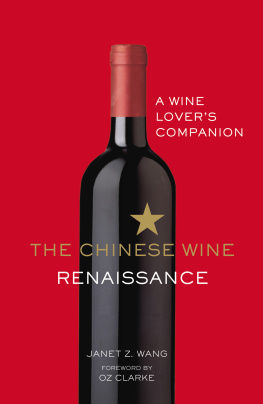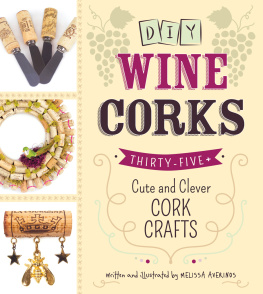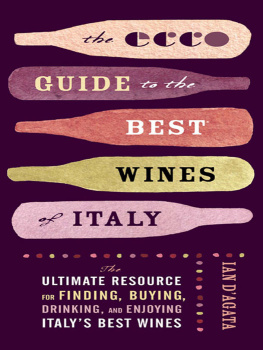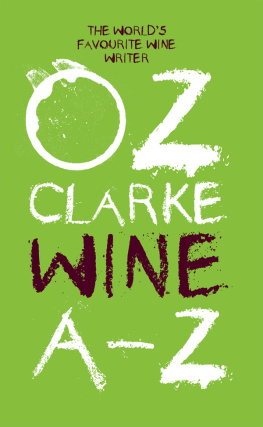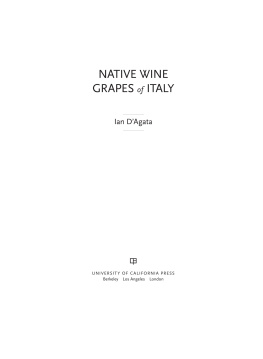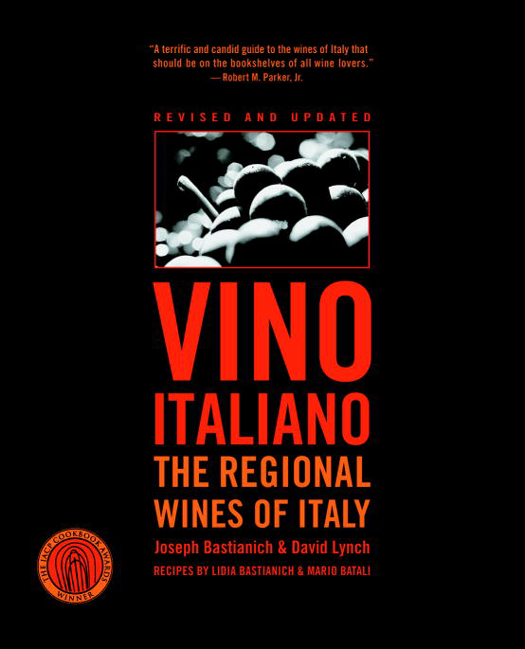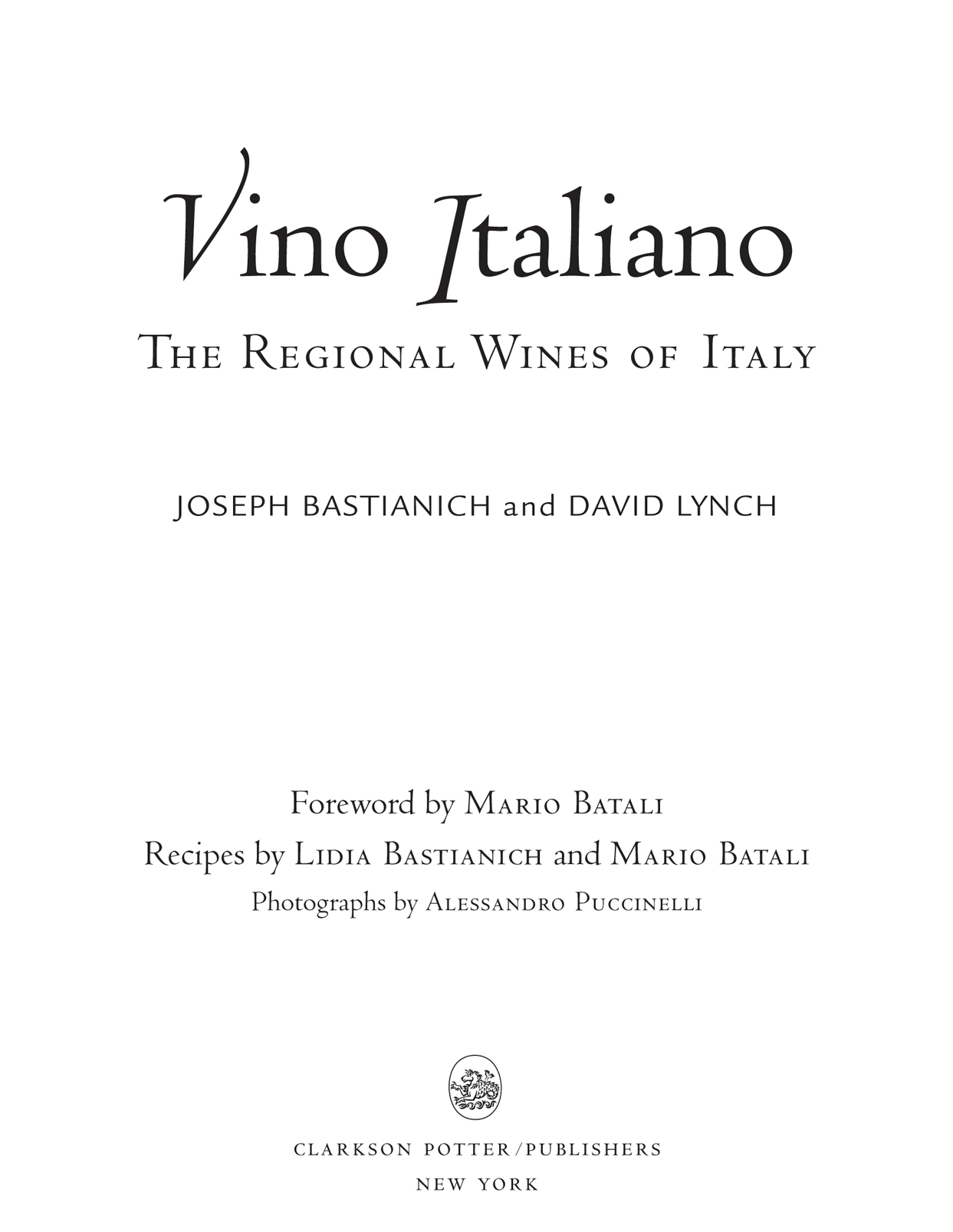Praise for Vino Italiano
With nearly 400 authorized wine grape varieties scattered over the 21 regions of its boot-shaped peninsula, Italy has long proved difficult for wine writers to cover comprehensively and accurately. This collaborative effort by Bastianich and Lynch is clearly up to the challenge, and the result is a lively and informative primer on Italian wines for the neophyte consumer and connoisseur collector alike.
Publishers Weekly
This examination of Italys vineyards and wines will help Americans seeking new tastes and bargain prices. A bonus is the commentary on regional cooking and recipes from Josephs mother, Lidia Bastianich of Felidia restaurant, and Mario Batali, Josephs partner in Babbo and other New York City restaurants.
Chicago Tribune
The first serious wine writing effort to come across this desk in 2002.
New York Times
Italy is the one country whose wine has transformed the most in the past two decades, creating a tremendous need for an authoritative, comprehensive book like this. And because Italian wine cant be explored fully without the food, the recipes and food discussions in Vino Italiano are invaluable. These authors have unprecedented passion, and it shows: this is the definitive guide.
Kevin Zraly, author of
Windows on the World Complete Wine Course
The book we all came to hear about, however, is getting great reviews, as well it should. In Vino Italiano: The Regional Wines of Italy, Joe Bastianich and Lynch have written not only the definitive guide to todays Italian wines, but one that is an interesting read, too. It explores the art of making wine and of drinking it. With this book, you can throw out all the outdated Italian wine books on your shelf. Vino Italiano has everything you want to know about Italian wines.
Pittsburgh Post-Gazette
If Italian food is your most likely menu choice, and youd like to learn more about the wines that go with it, Vino Italiano: The Regional Wines of Italy by Joseph Bastianich and David Lynch is for you. The book is absolutely crammed with information on each of Italys 21 wine regions, with maps, guided wine tastings, and, of course, food. But wine is at the forefront here: Theres an in-depth look at Italys vinicultural history, how each region developed, which wines they make and how and why they make them. There are suggested samplings and food pairings, and even tips on wine touring.
Boston Herald
Finally, the book that makes sense of the most exciting, diverse, and baffling wine country of them all. Bastianich and Lynch have written a comprehensive, authoritative, highly readable guide to the wines of Italy. An essential book for the oenophile, and for anyone who has ever wondered what to drink with his calamari. The recipes from Lidia Bastianich and Mario Batali are a major bonus.
Jay McInerney
This might be the only wine book ever to make you hungry.
New York magazine
No major wine country in the world has more great wines, more different types of wine, and fewer up-to-date resources for finding those wines than Italy. This well-researched book is a welcome addition to the reference shelf The prose is lively and helpful. This is a book that any lover of Italian wines will return to again and again.
Seattle Times
Joe Bastianich and David Lynch have covered the subject with new spirit and style, providing a wealth of information on the current wine scene along with astute insights into the Italian way of life. This is the most enjoyable book on wine (by no means just Italian) Ive come across in years.
Burton Anderson, author of The Wine Atlas of Italy
Copyright 2002, 2005 by Joseph Bastianich and David Lynch
Photographs copyright 2002 by Alessandro Puccinelli
Maps by Jeffrey Lindenmuth
Recipes by Lidia Bastianich () used by permission.
Portions of the chapters on Friuli, Tuscany, and Sicily first appeared in articles by David Lynch for Wine & Spirits magazine, and are used here by permission.
All rights reserved.
Published in the United States by Clarkson Potter/Publishers, an imprint
of the Crown Publishing Group, a division of Random House, Inc.
www.crownpublishing.com
www.clarksonpotter.com
Clarkson N. Potter is a trademark and Potter and colophon are registered trademarks of Random House, Inc.
Originally published in slightly different form in hardcover by Clarkson Potter/Publishers, an imprint of the Crown Publishing Group, a division of Random House, Inc., in 2002.
Library of Congress Cataloging-in-Publication Data
Bastianich, Joseph
Vino italiano : the regional wines of Italy/by Joseph Bastianich and David Lynch.1st ed.
p. cm.
Includes bibliographical references and index.
1. Wine and wine makingItaly. I. Lynch, David, 1967 II. Title.
TP559.I8 B38 2002
641.220945dc212001036456
eISBN: 978-0-7704-3426-7
v3.1
For Deanna, Olivia, Miles, and Ethan. J. V. B.
For Josie. D. R. L.
CONTENTS

FOREWORD
The I talian R enaissance
M ARIO B ATALI

Its a great time to be an Italian restaurateur in America. Say what you want about Nuevo Latino, Pan-Asian, retro- Brasserie, or any of the other food trends of recent years: Italian cuisine is still considered the number one ethnic food in America, and is more exciting than ever as people grow more knowledgeable about its regional nuances. Our customers in New York City revel in the subtleties of Italian foodlike the difference between San Daniele prosciutto from Friuli and Prosciutto di Parma from Emilia-Romagna, or how pasta prepared allamatriciana compares to pasta allarrabbiata . The term Italian continues to take on new and increasingly specific meanings.
This interest in authentic regional flavors has taken time to develop. One of the early pioneers was Lidia Bastianich, the celebrated chef, author, restaurateur, and television host, who tells some great stories about her early days in the business. She would walk through her first restaurant, Buonavia, in Queens, New York, handing out little samples of gnocchi with oxtails or stinco di vitello while her guests ate the red-sauced pastas that were on the menu. This was in the late sixties, the checkered-tablecloth era. Change came slowly. These days, I enjoy a lot more creative freedom on the menus at Babbo, Lupa, Esca, and Otto, all of which I co-own with Lidias son, Joeone of the authors of this book. But Im not so sure I could have sold my Beef Cheek Ravioli even ten years ago. I can now, along with stinging nettles, eels, head cheese, and just about any other funky ingredient I dig up. Stop into Babbo some night and youll see plates of calfs brains and lambs tongue flying out of the kitchen. At Esca our specialty is crudo, Italian-style raw seafood. Thats a long way from spaghetti and meatballs.
However, the Italian food renaissance is only now expanding to include the full array of Italian wines. A certain clique of Brunellos, Barolos, Barbarescos, and super-Tuscans have become auction-house wines alongside Bordeaux. But beyond these, even the sophisticated drinkers at Babbo dont stray too far. For all the interest in regional Italian food, most people are content to stay with familiar names from Tuscany or Piedmont when it comes to wine. Maybe its simple economics: a twenty-five-dollar plate of food is less of a risk than a fifty- or hundred-dollar bottle of wine. But its more likely that people feel intimidated by the sheer breadth of Italian wineand theyre worried about getting something they wont enjoy.


